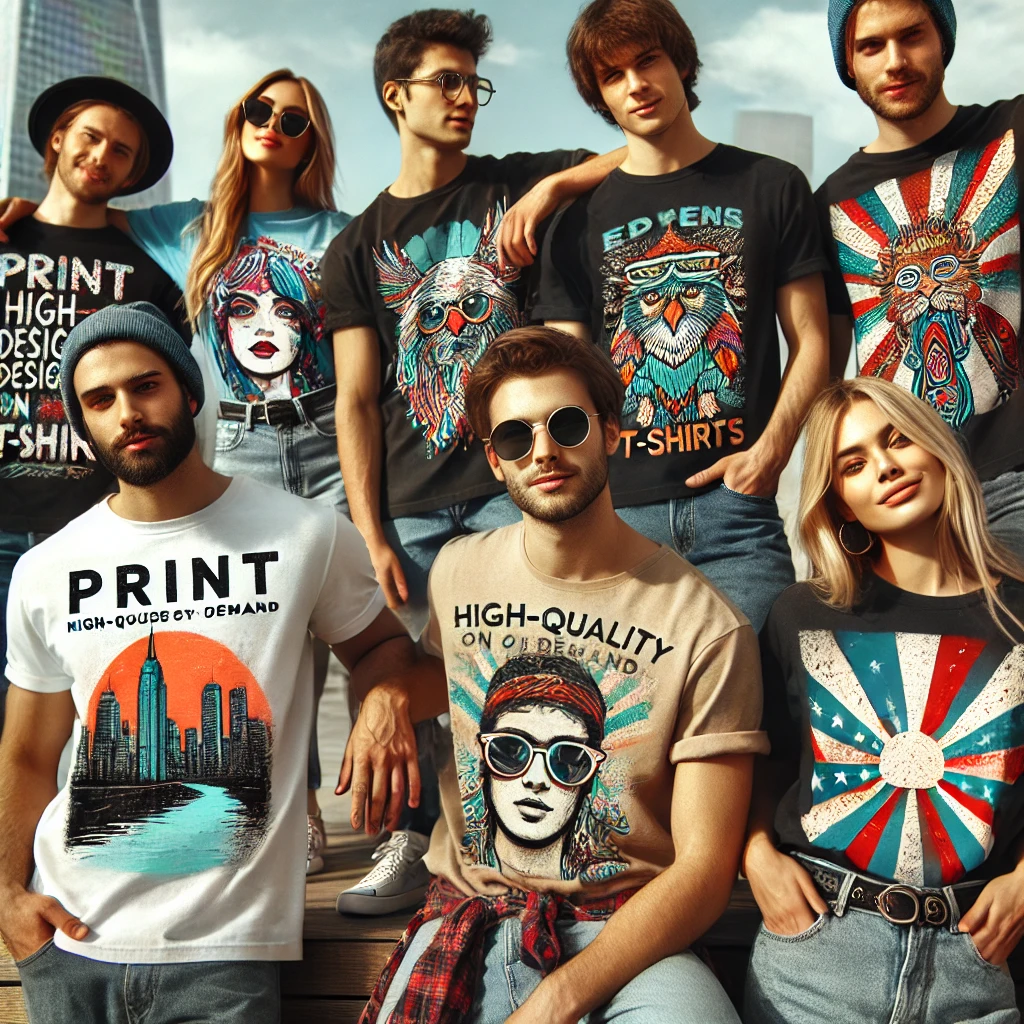Printing high-quality designs on demand t-shirts has become increasingly popular in recent years. From small businesses to individuals looking to create personalized merchandise, the demand for custom print-on-demand t-shirts is rising. However, achieving a professional look can be challenging without the proper knowledge and tools. In this guest post, we will explore some tips and techniques to help you print high-quality designs on-demand t-shirts.
1. Choose High-Quality Materials
The first step in creating high-quality print on demand shirts is selecting suitable materials. This includes choosing a durable and comfortable fabric. Cotton blends are commonly used as they offer a soft feel and are relatively easy to work with during printing. Select printer-friendly fabrics that will accept different ink types and hold colors well.
2. Use Professional Printing Techniques
To achieve crisp and vibrant designs on your t-shirts, it’s essential to use professional printing techniques like direct-to-garment (DTG) or heat transfer vinyl (HTV). DTG printing involves digitally transferring ink directly onto the fabric, allowing for intricate designs with numerous colors and gradients. On the other hand, HTV involves cutting designs out of vinyl material and bonding them to the shirt using heat.
3. Create Vector Graphics
Creating vector graphics ensures that your designs maintain quality regardless of size or scaling. Vector files comprise paths instead of pixels, allowing for smooth edges and infinitely scalable artwork that remains crisp even when enlarged significantly. Programs like Adobe Illustrator or CorelDRAW can be used to create vector graphics.
4. Optimize Image Resolution
When working with raster images (such as photographs), optimizing their resolution before printing them on t-shirts is crucial. Print quality generally requires a resolution of at least 300 dots per inch (DPI) or pixels per inch (PPI). Be sure to resize your images properly so they are large enough for printing without compromising sharpness and clarity.
5. Conduct Color Calibration
Colors can look different on a screen versus on a physical t-shirt. To ensure accurate color representation, it’s necessary to calibrate your monitor and printer accordingly. Using calibration tools or referencing color swatches can help you achieve consistency in your designs, from digital screens to printed products.
6. Test Print Before Full Production
Before diving into a bulk production run, conducting test prints on demand t-shirts is essential to ensure the final product meets your expectations. By test printing a copy of your design, you can make any necessary adjustments or improvements, such as tweaking colors or positioning, ensuring the final result is satisfactory.
7. Consider Texture and Placement
When designing graphics for t-shirts, consider the texture and placement of the design on the shirt. Avoid printing over seams or uneven surfaces, as this could lead to distorted designs or discomfort when wearing the garment. Experiment with different placements and orientations to find what works best for your design.
8. Follow Care Instructions
To maintain the quality of your custom print-on-demand t-shirts, following the care instructions provided by your supplier or printer is crucial. Printing techniques may require specific washing instructions to ensure longevity and color vibrancy.
9. Take Advantage of Mockup Templates
Mockup templates are a valuable tool for visualizing your designs on-demand t-shirts. They allow you to showcase your artwork realistically without producing physical samples. Many online platforms and graphic design software offer ready-to-use mockup templates where you can easily insert your designs and see how they would look on different t-shirt styles and colors. This can save time and money by clearly previewing the final product before printing.
10. Offer Variety in Design Options
Consider offering various design options for your print-on-demand t-shirts to cater to a broader audience. This includes different sizes and colors and diverse themes, styles, and trends. You can create collections with specific themes or collaborate with different artists to bring unique designs to your customers. Offering variety ensures something for everyone and helps differentiate your brand from competitors.
Conclusion
Printing high-quality designs on demand for t-shirts involves carefully choosing materials, printing techniques, graphic formats, image resolution, color calibration, testing, and consideration of texture and placement. By following these tips, you can create professional-looking custom t-shirts that meet the demands of businesses and individuals seeking unique and eye-catching merchandise offerings.
Stay in touch to get more updates & news on Orangedip!


